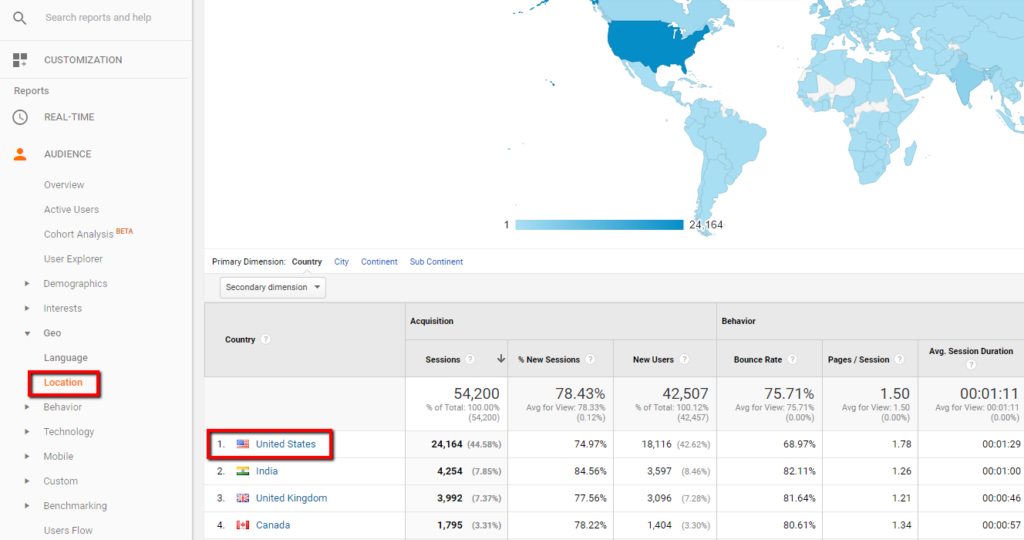Optimizing Information Analysis: Google Analytics Secondary Dimension Explained
Optimizing Information Analysis: Google Analytics Secondary Dimension Explained
Blog Article
Unlocking the Power of Second Measurement Analytics for Enhanced Data Insights and Decision-Making
In the world of data analytics, primary dimensions usually take the limelight, yet the true deepness of understandings exists within the realm of additional dimensions. By harnessing the power of secondary measurement analytics, companies can reveal covert trends, reveal relationships, and essence much more meaningful conclusions from their information.
Value of Secondary Measurements
Checking out the value of additional dimensions in analytics unveils the surprise layers of data insights critical for informed decision-making in numerous domains. Second measurements offer a much deeper understanding of main data by supplying added context and viewpoints. By incorporating second dimensions right into analytics, organizations can remove a lot more nuanced and extensive insights from their datasets.
One key value of secondary measurements is their ability to section and categorize primary data, permitting a much more detailed analysis of details subsets within a dataset. This division enables services to identify patterns, patterns, and outliers that could not appear when looking at the data in its entirety. Additional measurements aid in uncovering correlations and reliances in between various variables, leading to even more exact forecasting and predictive modeling - secondary dimension.
Additionally, additional measurements play a crucial role in enhancing data visualization and reporting. By adding additional dimensions to visualizations, such as graphes or charts, experts can develop extra insightful and informative representations of data, helping with much better communication of findings to stakeholders. In general, the combination of secondary dimensions in analytics contributes in unlocking the full potential of information and driving evidence-based decision-making.
Trick Advantages of Making Use Of Additional Dimensions
Utilizing second dimensions in analytics offers companies a tactical benefit by enhancing the deepness and granularity of data understandings. By exploring information utilizing second dimensions such as time, area, gadget kind, or individual demographics, companies can uncover patterns, fads, and correlations that might otherwise stay hidden.
Additionally, the utilization of additional measurements improves the context in which key data is translated. It provides a much more thorough view of the connections in between different variables, allowing companies to make informed decisions based upon a more alternative understanding of their information. In addition, secondary dimensions promote the identification of outliers, anomalies, and locations for optimization, ultimately causing extra effective techniques and boosted end results. By leveraging secondary dimensions in analytics, organizations can harness the complete possibility of their information to drive better decision-making and achieve their service purposes.
Advanced Data Analysis Methods
A deep dive right into sophisticated information analysis methods exposes advanced techniques for drawing out important insights from complex datasets. One such technique is artificial intelligence, where algorithms are employed to identify patterns within information, forecast results, and make data-driven choices. This technique permits the automation of analytical model structure, making it possible for the handling of large quantities of data at a faster rate than conventional methods.
Another advanced method is predictive analytics, which uses statistical formulas and artificial intelligence strategies to forecast future outcomes based upon historic information. By examining patterns and patterns, organizations can anticipate customer behavior, market fads, and potential risks, encouraging them to make positive choices.
Moreover, text mining and belief analysis are beneficial methods for drawing out understandings from unstructured information resources such as social Web Site networks remarks, customer testimonials, and study feedbacks. By examining message information, companies can comprehend consumer point of views, identify arising patterns, and enhance their services or products based upon feedback.
Enhancing Decision-Making Through Second Measurements

Enhancing decision-making via additional dimensions enables companies to make even more educated and targeted tactical choices. For instance, by segmenting customer data based on secondary measurements like buying background or interaction degrees, business can customize their marketing strategies to particular audience sections, bring about enhanced conversion prices and consumer contentment. Furthermore, secondary dimensions can assist determine correlations and partnerships between various variables, allowing companies to make data-driven decisions that drive growth and profitability.
Executing Secondary Measurement Analytics
When incorporating additional measurements in analytics, companies can unlock deeper insights that drive critical decision-making and improve overall efficiency. This requires recognizing the particular concerns the organization seeks to address and click here for more the data points required to address them.

Additionally, organizations need to utilize progressed analytics devices and innovations to enhance the process of including second measurements. These devices can automate data processing, analysis, and visualization, permitting companies to focus on translating understandings rather than hand-operated information adjustment.
Verdict
Finally, second measurement analytics play an essential function in boosting information understandings and decision-making procedures. By using sophisticated information evaluation strategies and applying second measurements efficiently, organizations can open the power of their information to drive calculated service choices. The crucial benefits of making use of second dimensions can not be overstated, as they give a much deeper understanding of data fads and partnerships. It is crucial for organizations to utilize second dimension analytics to stay affordable in today's data-driven landscape.
In the realm of data analytics, key measurements commonly take the spotlight, but the real deepness of insights lies within the world of additional dimensions.Making use of additional dimensions in analytics offers companies a calculated advantage by augmenting the deepness and granularity of data understandings. By leveraging second dimensions in analytics, companies can harness the full potential of their information to drive much better decision-making and achieve their service goals.
Implementing information validation procedures and regular audits can aid preserve information high quality and reliability.
By making use of advanced information analysis strategies and executing second dimensions properly, organizations can open the power of their data to drive calculated company choices.
Report this page